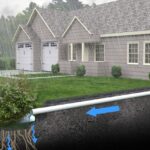Are you a homeowner looking for an engaging and in-depth guide on how to frame a shed roof? It’s here! Whether you’re embarking on a DIY shed building project or just curious about one of the vital aspects of shed construction, this article will provide all the necessary insights. With the right knowledge, tools, and materials, you can create a stable and aesthetically pleasing shed roof yourself.

Understanding the Basics of Shed Roof Framing
Before diving into the framing process, it’s crucial to understand the basics. In essence, shed roof framing involves creating a sloped roof that usually consists of beams, trusses, and rafters. These elements collectively provide structural support, ensuring your shed roof can withstand various weather conditions.
Why Choose a Shed Roof Design?
A shed roof is known for its simplicity and cost-effectiveness. Its single sloping surface efficiently directs rainwater away, reducing maintenance requirements. Furthermore, its uncomplicated design offers increased ceiling space, ideal for storage or housing taller items.
Gathering Essential Tools and Materials
To begin, assembling the right tools and materials is necessary. Here’s a list of essentials:
- Measuring tape
- Framing square
- Hammer or nail gun
- Saw
- Lumber
- Roofing nails
- Plywood sheathing
- Protective gear (gloves, goggles)
Picking the Right Lumber
Lumber selection is critical as it forms the backbone of your roofs structure. Always opt for quality lumber that is straight and free from knots, ensuring greater stability. Common choices include pine, spruce, and fir.
Step-by-Step Guide to Framing a Shed Roof
Step 1: Create a Detailed Plan
Before cutting any wood, you must have a comprehensive plan. Your plan should outline the roof’s dimensions, slope, and the number of beams, trusses, or rafters needed. This preparation will streamline the building process and minimize errors.
Step 2: Lay Out the Plates
Begin framing by laying out the top and bottom plates on a flat surface. The top plate supports the rafters while the bottom plate transfers the load to the walls.
Step 3: Installing Rafters or Trusses
With the plates in place, you can start adding the rafters or trusses. Secure them firmly to the top plate, ensuring they are evenly spaced. They must be cut to the right angle to match the slope of your shed roof.
Step 4: Install Plywood Sheathing
Once the rafters are in place, lay plywood sheets over them. Ensure the sheets fit snugly and securely nail them down. The sheathing adds an additional layer of support and acts as the base for the final roofing material.
Step 5: Apply Roofing Material
Finally, apply the roofing material of your choice atop the sheathing. Options include shingles, metal, or composite panels. Each material has its advantages; therefore, consider longevity, weather resistance, and aesthetics.
Considerations for Different Climates
Your shed roof’s design and materials might differ based on your climate. In snowy regions, a steeper slope prevents snow accumulation, while in rainy areas, a waterproof material is advisable.
Adhering to Building Codes
Always verify your local building codes and guidelines. Compliance ensures your project is safe and legal, safeguarding your sheds structural integrity.
Maintenance Tips to Extend the Roofs Life
Every roof requires maintenance to provide lasting performance. Regular inspections can identify potential issues like leaks or damage early, preventing costly repairs.
Weatherproofing Your Roof
Consider waterproofing your roof using a sealant or underlayment. This step adds an additional barrier, providing extra protection from moisture.
In Summary
Framing a shed roof doesn’t have to be a daunting task. With the right tools, materials, and preparation, you can create a sturdy and visually appealing roof. Remember to plan meticulously, gather quality materials, and ensure compliance with local codes. Happy building!

Frequently Asked Questions
What is the difference between rafters and trusses?
Rafters are single beam elements, while trusses are pre-fabricated structures that consist of multiple beams for added support.
Can I use shingles on any type of shed roof?
Yes, shingles are a versatile option appropriate for nearly all roof types, offering excellent weather resistance and aesthetic appeal.
How do I know the right slope for my shed roof?
The slope can depend on factors like climatic conditions and intended use. Generally, a steeper slope is preferable in snowy areas to prevent snow buildup.
How often should I inspect my shed roof?
Regular inspections should be conducted at least twice a year. This routine will preserve its condition and highlight any necessary repairs.
For more detailed information on choosing materials and maintaining your roof, consider visiting Roof Materials and Choose Construction.
This article contains affiliate links. We may earn a commission at no extra cost to you.








